Top 11 Amazing Eco-friendly Building Materials
Construction sites contribute to all sorts of pollution, be it Air, water, soil, or noise pollution. Although it is difficult to contain all the pollution in one go. But you can always use such a material that is less polluting and produces no or low carbon emissions.
Here you can find out the list of 11 best eco-friendly building materials to help you reduce your dependence on polluting construction materials.
11 Eco-friendly Building Materials
#1. Cork
Cork is most commonly used as a wine bottle stopper or for bulletin boards, but recent studies and experiments have found other uses for cork. As an eco-friendly building material for its lightweight and low cost. You don’t need to cut any trees to harvest the cork. The cork is harvested from a living tree which continues to grow to produce more cork.

Cork is harvested from the water repellent layer of bark on the cork oak tree. These trees mostly grow in the Mediterranean region of southwest Europe and northern Africa. The trees grow for 25 years for their trunks to become wide enough for their cork, which is the tree bark, to be harvested. The bark or the cork can be stripped from a tree every 9 years. These trees can live up to 300 years. And older trees produce a better quality of cork.
Watch this video showing how eco-friendly building material cork is harvested.
The cork as an eco-friendly building material has all the required features as it is flexible, durable, and can revert to its original shape even if you put it under pressure. The cork efficiently absorbs the noise, provides insulation, is waterproof, fire-resistant, and above that the cork can be easily recycled into new products.
For all its qualities, you can use the cork for insulation, flooring, and roof titles among many other uses in the building. People around the world are using cork to build homes, hotels, and studios, among many other sustainable building projects.
Here is an example of a house built using cork cardboard.
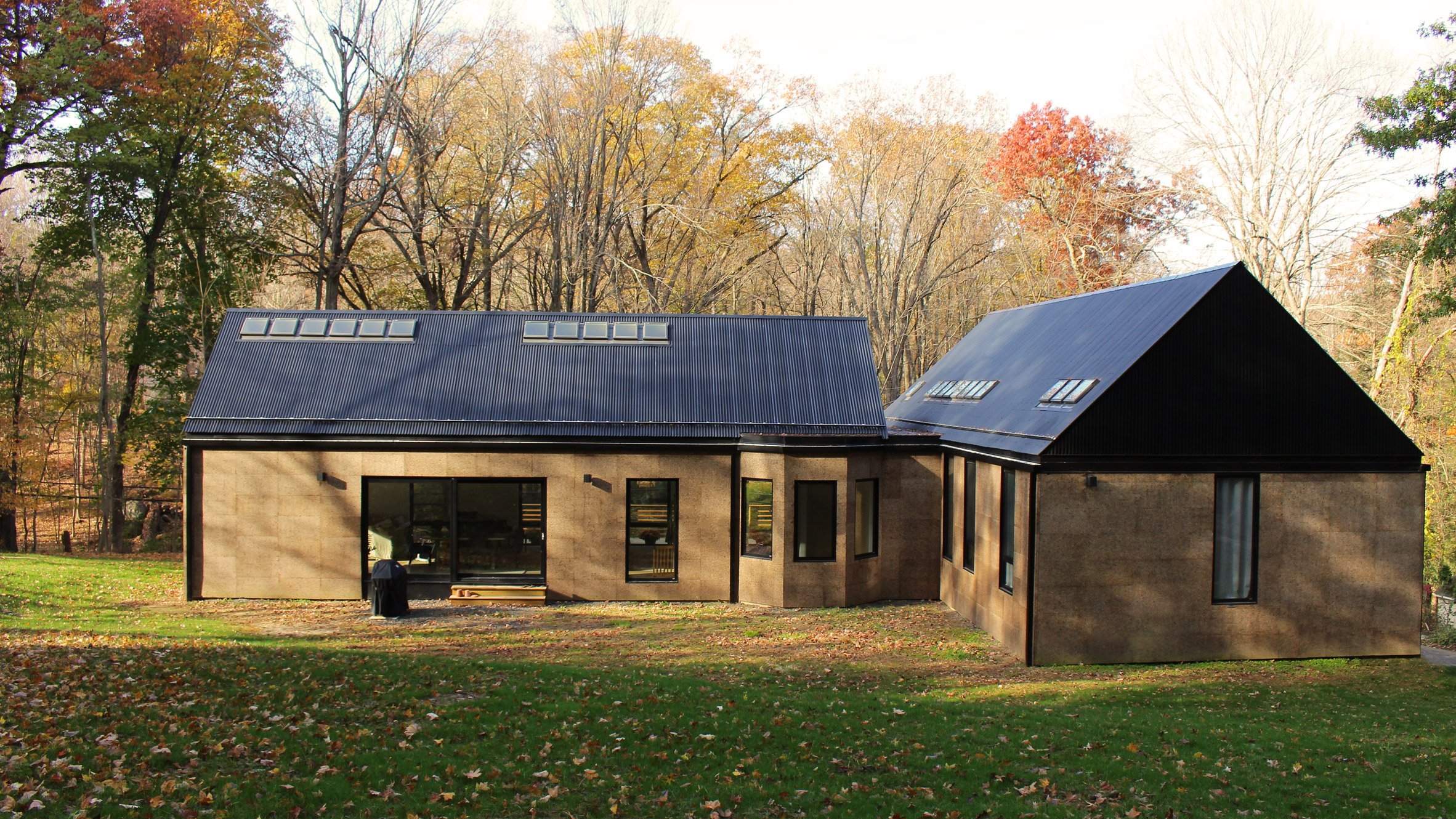
Cork furniture
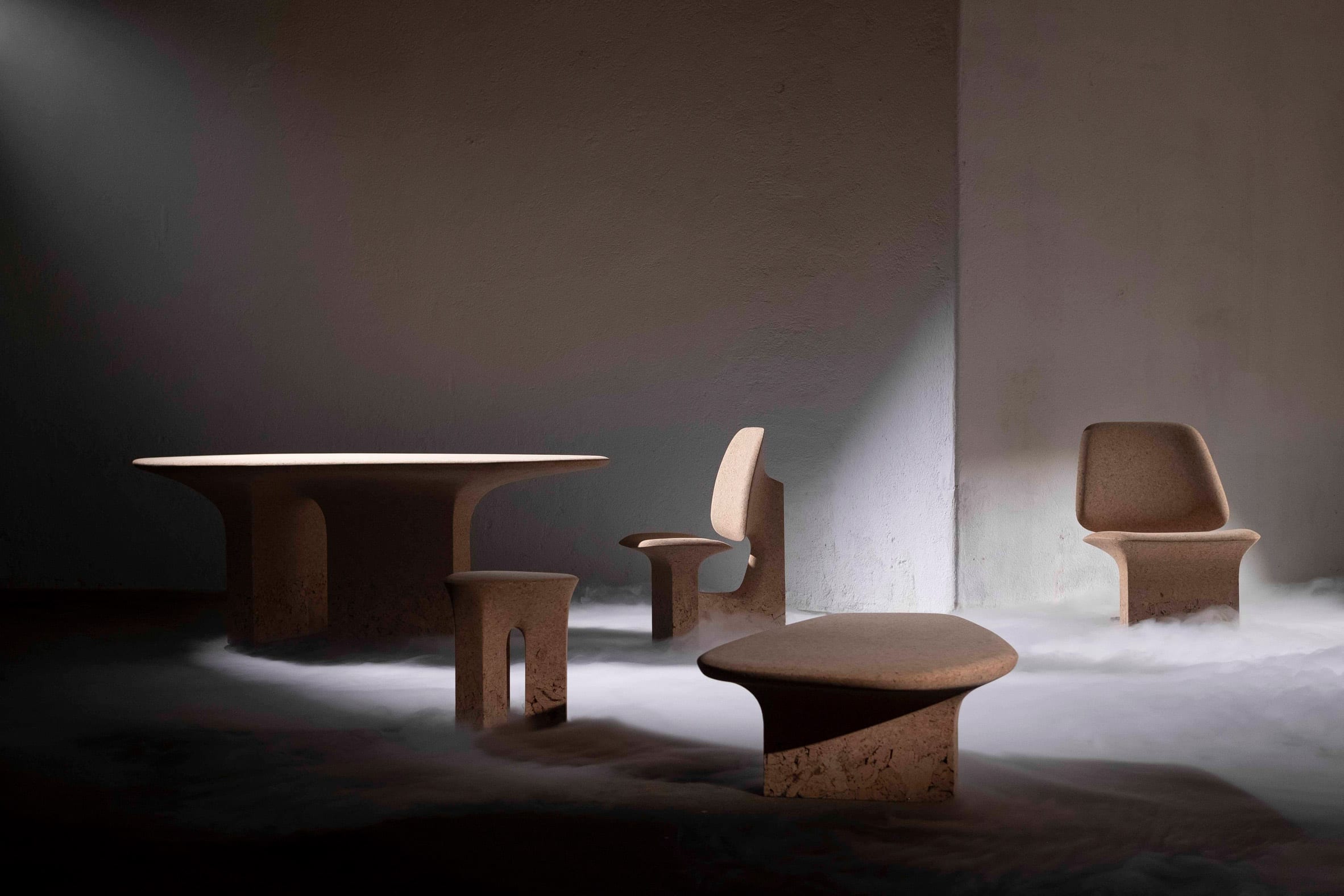
Check out this video showing the biodegradable home build using the cork Legos. And this video is for the cork-clad house with thermal walls.
The only problem with cork is that it needs to be sourced from Mediterranean regions which may add to the cost and carbon emissions of transportation.
#2. Coffee Husk
Colombia is the world’s largest producer of coffee, with its coffee exports touching 13.5 million bags of coffee beans in the financial year 2020-21. Even with this booming coffee industry, Colombia is among the economically backward countries. With 35 percent of its population living below the poverty line. Making affordable housing a major issue for the local population.
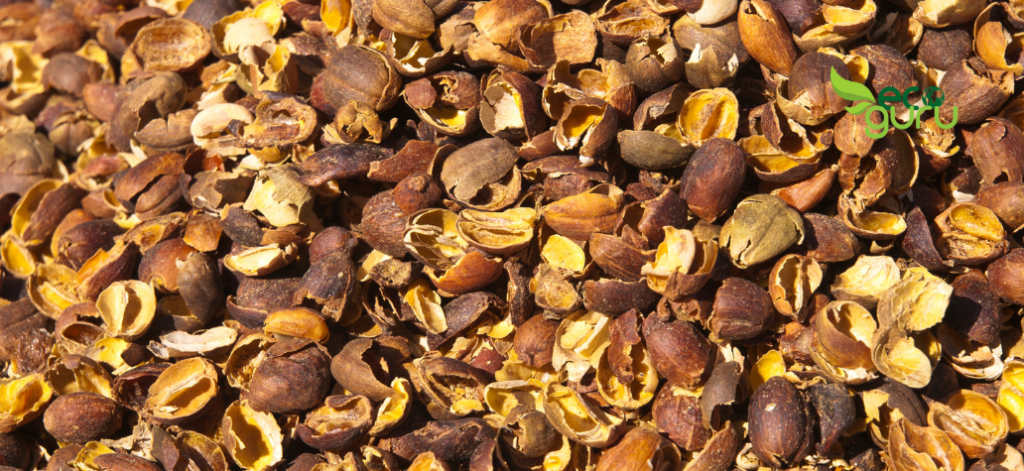
This challenge encouraged the Colombian company Woodpecker to come up with a unique solution for affordable housing. They developed building blocks by combining coffee husks with recycled plastics. The Coffee husk is the skin of the coffee beans that dries out and falls off during the roasting process. There is no other use for the coffee husk and it usually ends up in the landfills and adds to already overflowing waste.
The blocks designed by woodpecker are linked together using a steel frame to create a lightweight and easy-to-build tiny buildings. That is great as single-family homes, classrooms for rural areas, or isolated areas. The houses build using this eco-friendly building material are pest and moisture resistant and are built with economical costs.
These are some of the houses built using the coffee husk by the woodpecker while working alongside the Colombian government.


#3. Mycelium
Mycelium has the potential to revolutionize the field of fashion, art, food, shipping, and construction by providing a sustainable alternative. Mycelium is the tiny thread-like roots of the mushrooms that are strong and durable when dried. This biodegradable and compostable material can even resist mold formation, water, and fire.
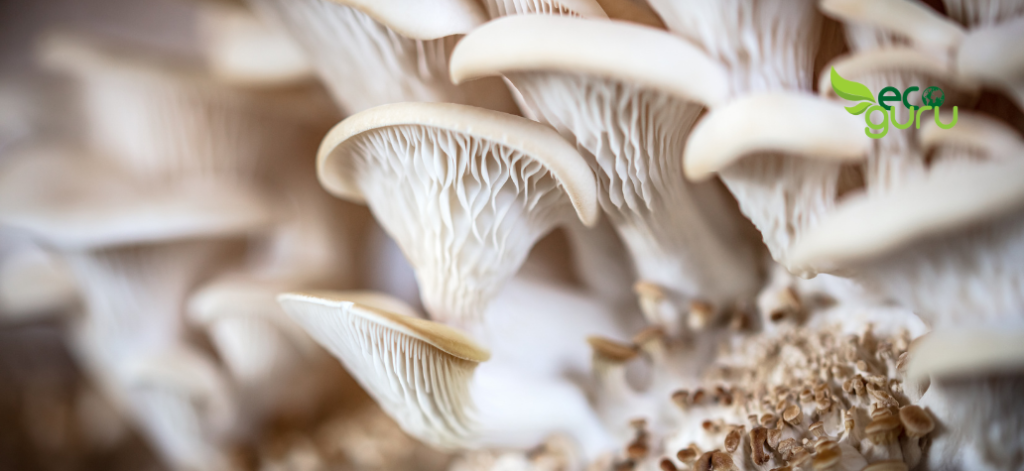
In the past few years, mycelium had been used to create eco-conscious packaging materials, meat alternatives, fabrics, and skincare products. Mycelium has also been compressed into bricks for use in the construction of buildings.
The mycelium bricks are lightweight yet durable making them ideal for constructing complex buildings. Since mycelium is a living organism, it can self-regenerate quickly to form desired structures. These mycelium bricks are free from all sorts of toxins making them an ideal replacement for the polluting concrete used in construction.
These are examples of the use of this eco-friendly building material for construction using mycelium bricks.
Hifi in queens, New York by architects The Living and Ecovative

The growing pavilion in the Netherlands was created to showcase the self-assembling properties of mycelium.
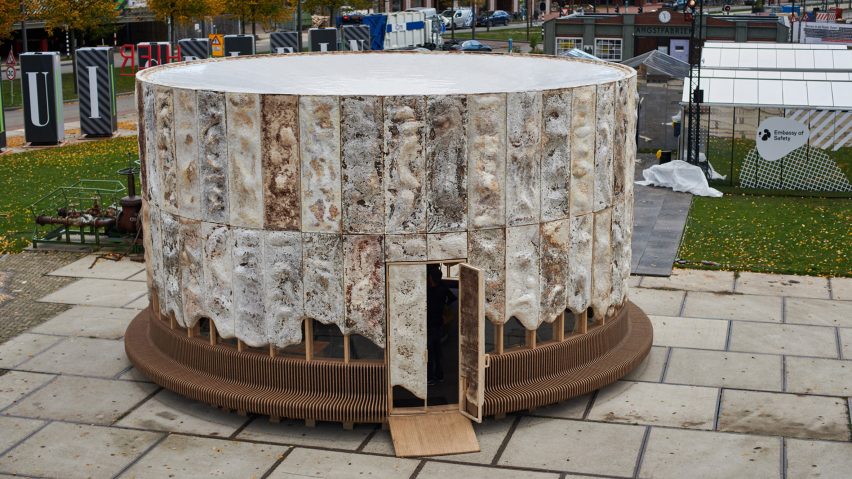
The Mycotree project in Seoul, South Korea shows the strength of mycelium to be strong enough to act as an essential structure and support for the building.
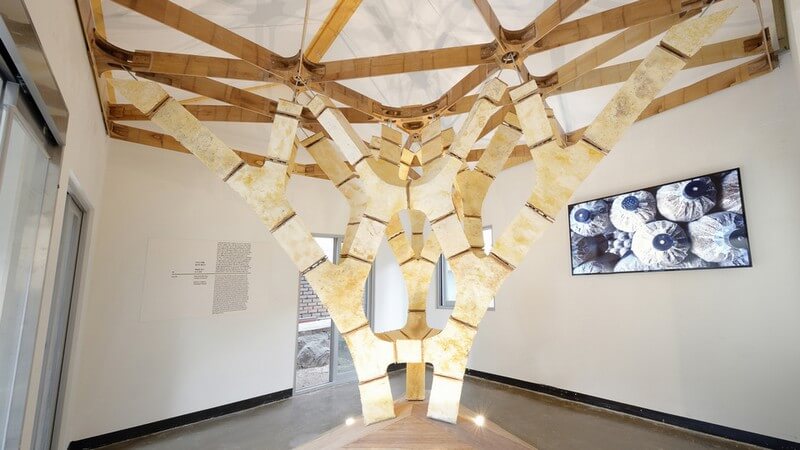
Mycelium eco-friendly building material is not only sustainable but also add natural beauty to the surrounding space.
#4. Plastic Bricks
Plastic waste is a serious problem worldwide, with India alone has produced 34 lakh tons of plastic waste in 2019-20 as per Indian government data. Of all the plastic produced to date, only 9 % of plastics have ever been recycled. Leaving us with tons of plastic waste that are clogging the landfills and resulting in the deaths of many marine creatures.
Seeing mounting plastic waste, young Kenyan engineer Nazambi Matte designed machines to mix the plastic and sand together to form a plastic brick. Nazambi’s machines mixed the plastic and sand at a high temperature where plastic melts and acts as a binder. The mixture is then compressed into bricks that are cheaper and stronger than concrete.
Here are the bricks created by Nazambi using her own machines and techniques.
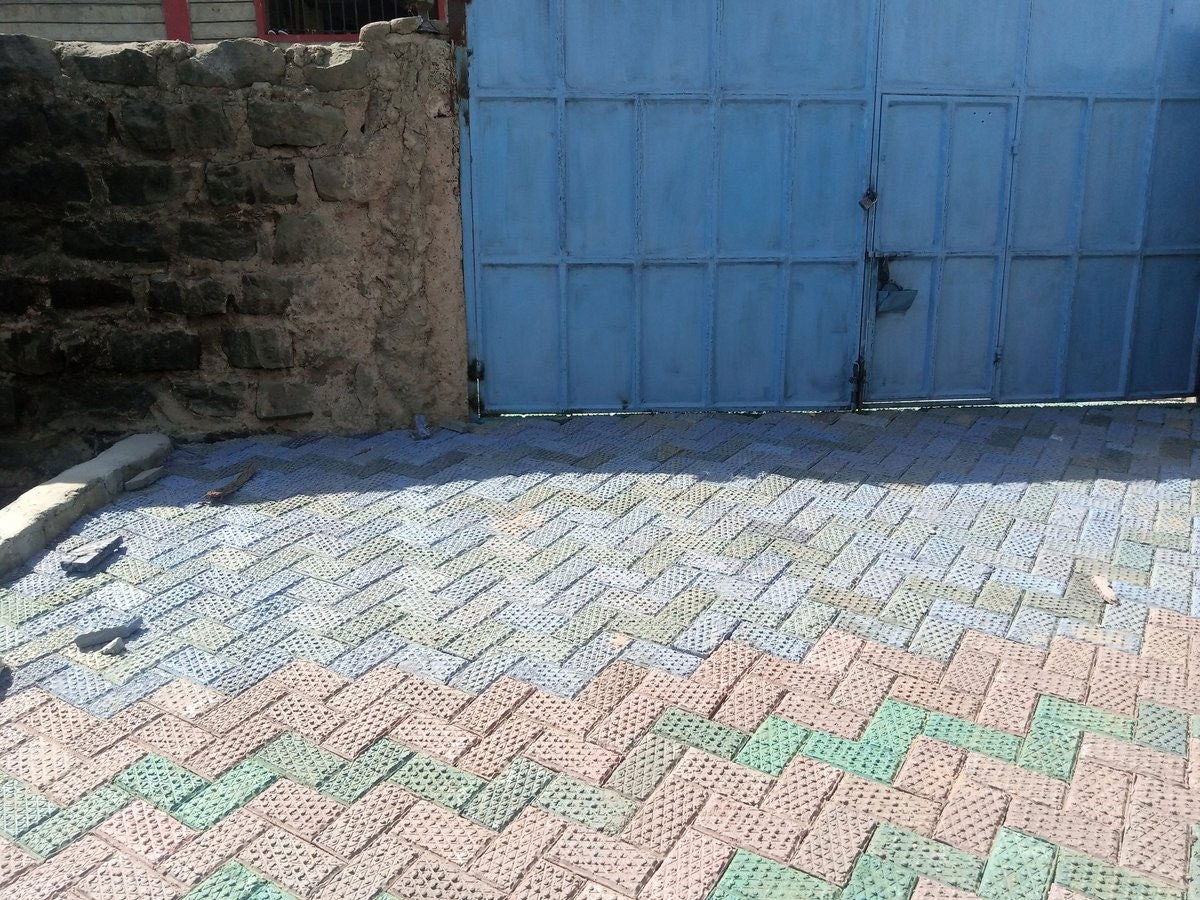
Indian-based Rhino machines have also come up with plastic bricks that are made by using 20% plastic waste and 80% foundry sand waste. These plastic bricks are also built using plastic as the bonding agent.
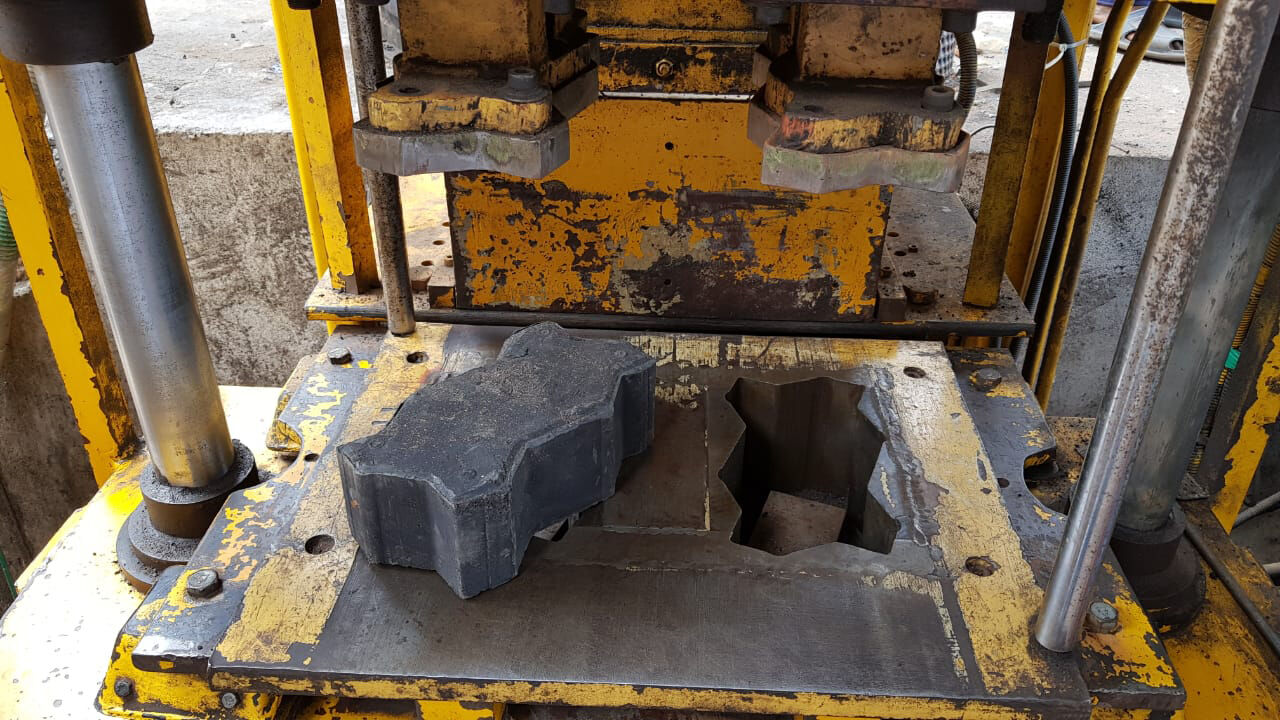
The practice of creating plastic bricks helps reduce carbon emissions and reduce the waste going into landfills.
#5. Sea Weed
On the coast of Denmark, there is an island of lacey that has houses with roofs made of seaweed. There are many houses that are over 300 years old with roofs made of seaweed. That can be identified by their giant roofs.
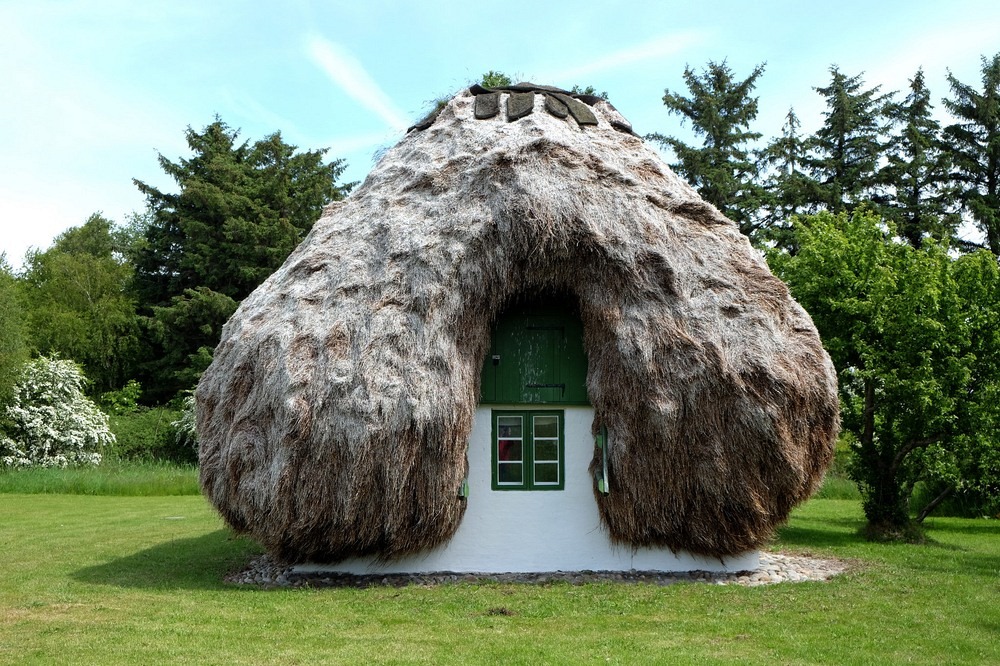
Seaweed is a very durable eco-friendly building material that gets reproduced every year on its own and comes to shore with no human efforts. It can be collected and dried with sun and wind in open fields. It can then be carried easily to the building sites for its lightweight.
The modern-day construction of houses using the seaweed is done by making the seaweed pillows that are then assembled to build the homes. This architecture firm has used the old traditions with modern solutions to design houses that low cost and durable.
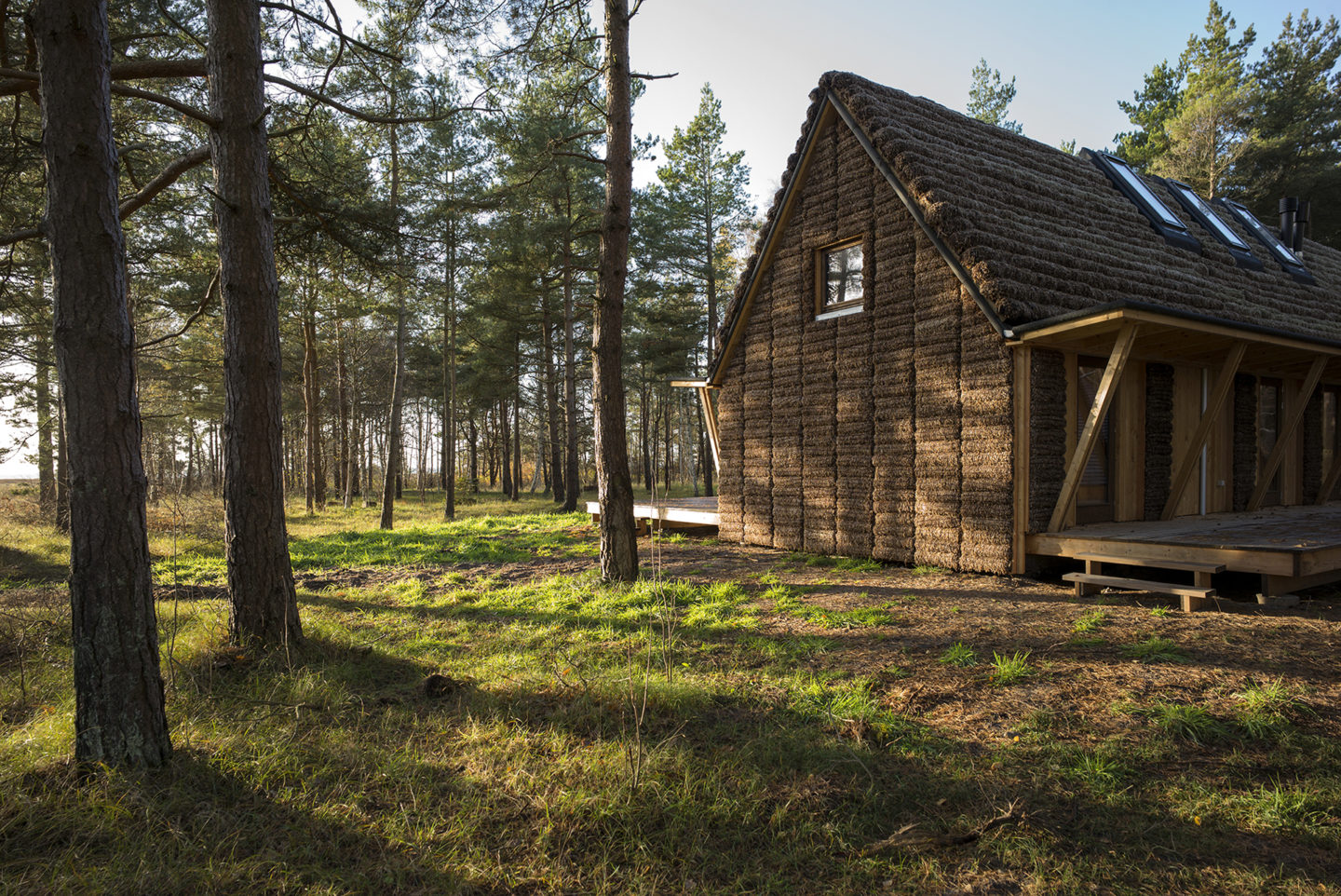
#6. Cob or Cobb
Cob or Cobb is an eco-friendly building material made by mixing the sandy soil clay, straw a fibrous material. The content of the subsoil varies naturally and can be changed with sand or clay as per requirement. The Cob material thus created is fireproof and resistant to earthquakes. Although it is a labor-intensive material to build overall building cost is less.
The houses build using the cob material are best looking that create unique home designs with curves and furniture built directly into the walls. This material was ideally used for building unique designs and sculpture designs. Recently it has been widely used to build natural eco-friendly buildings.
Here are the examples of cob being used as an eco-friendly building material for unique-looking buildings that too at cheap costs.
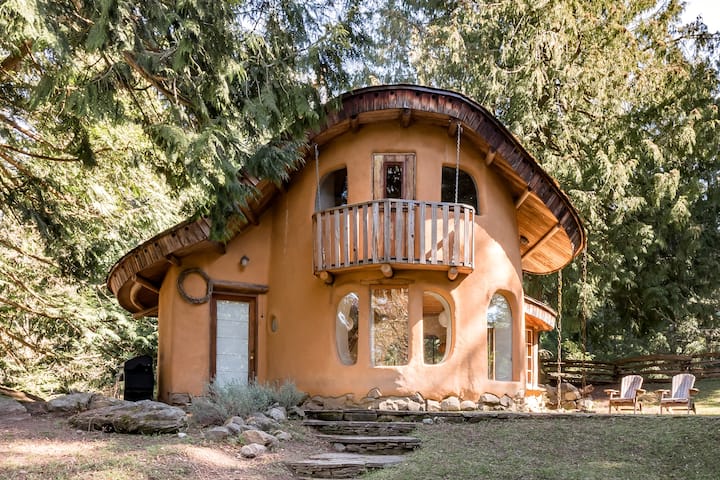
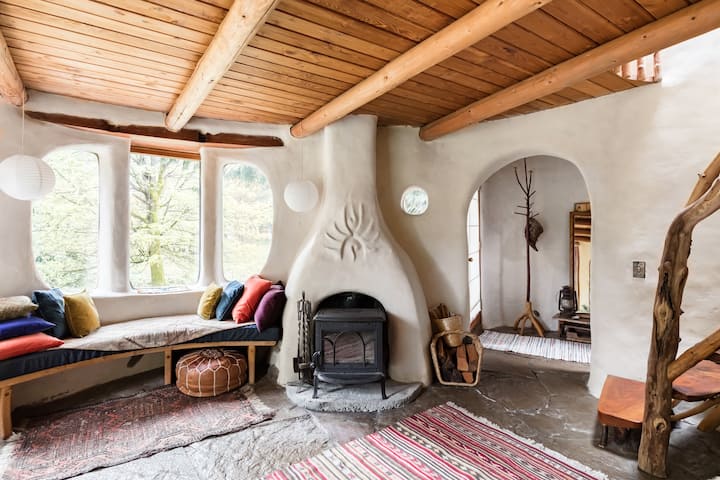
The material for constructing a cobb house can be found on the construction site. That reduces the carbon emissions and expenses incurred in bringing in the construction material.
#7. Bamboo
Bamboo is one of the best and oldest materials being used as an eco-friendly building material. The bamboo can grow very fast with some bamboo plants growing almost 3 ft in one day. Another benefit is that it can regrow from the same plant after it’s harvested without the need for replanting.
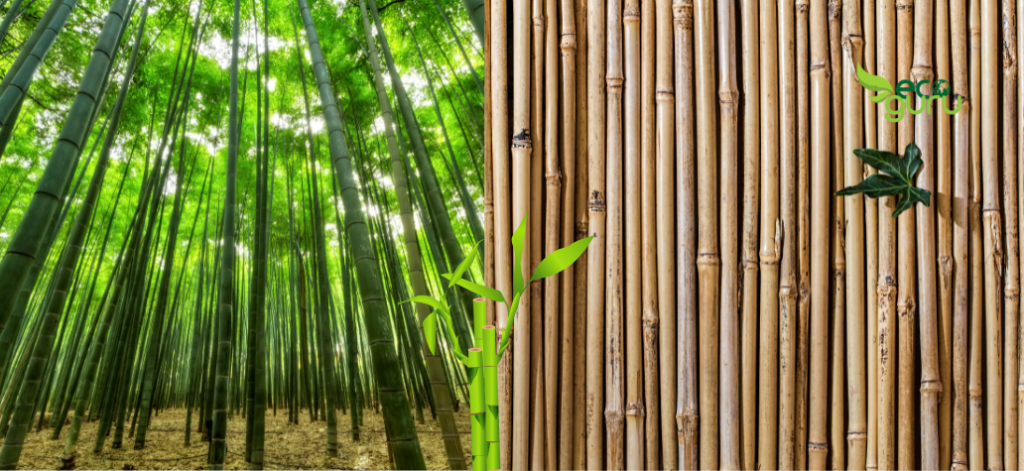
Bamboo has a great strength-to-weight ratio, which means it is stronger and can handle more load compared to its own weight. Bamboo can be used for many activities related to construction, be it flooring or supporting the roof.
Here are some examples of the construction done using eco-friendly building material bamboo.
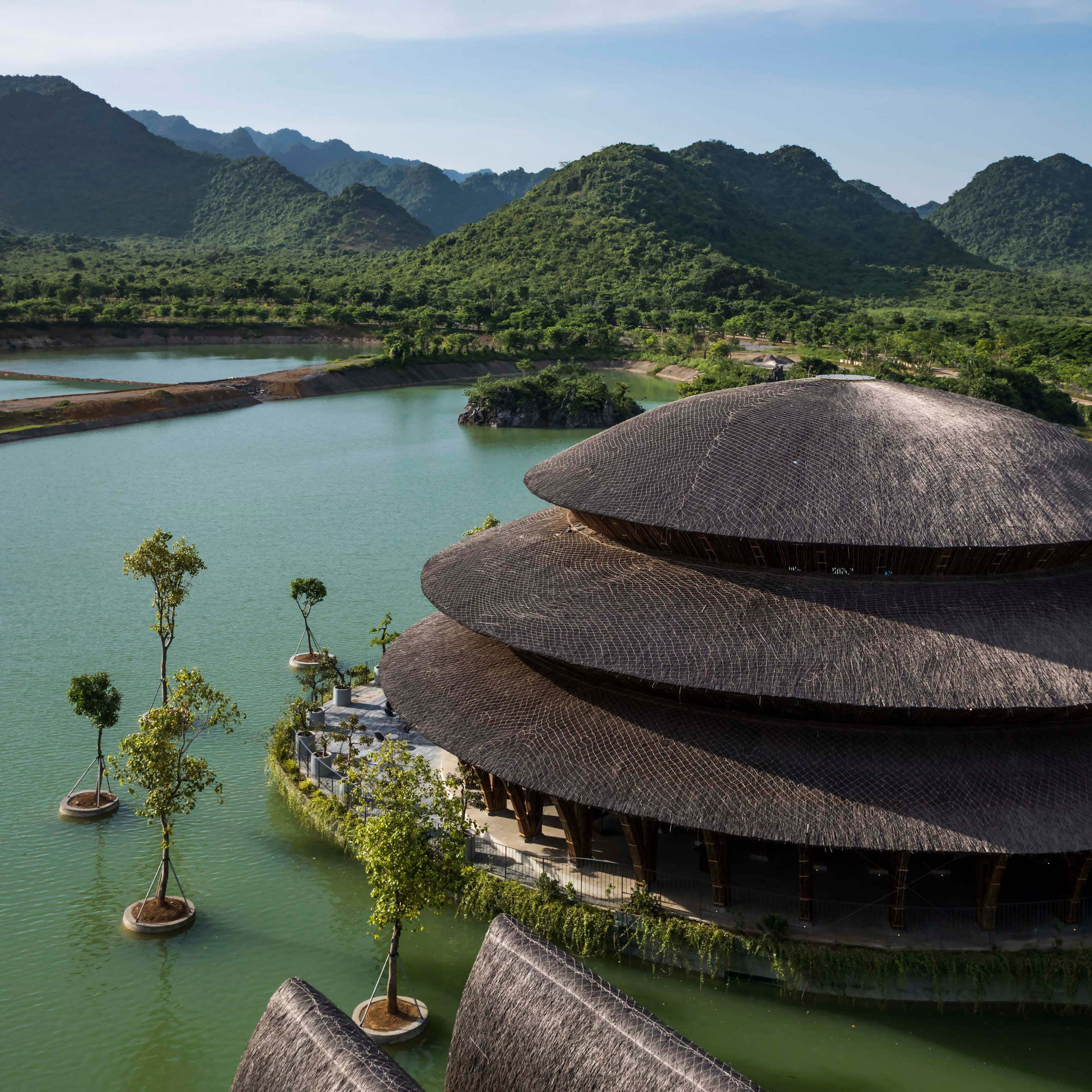
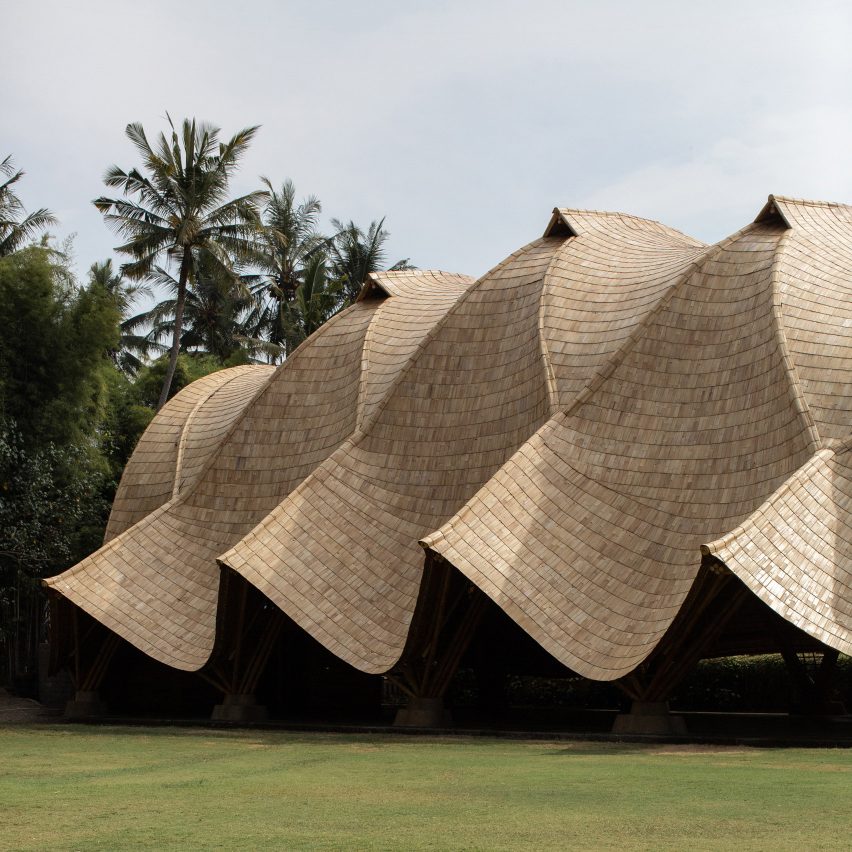
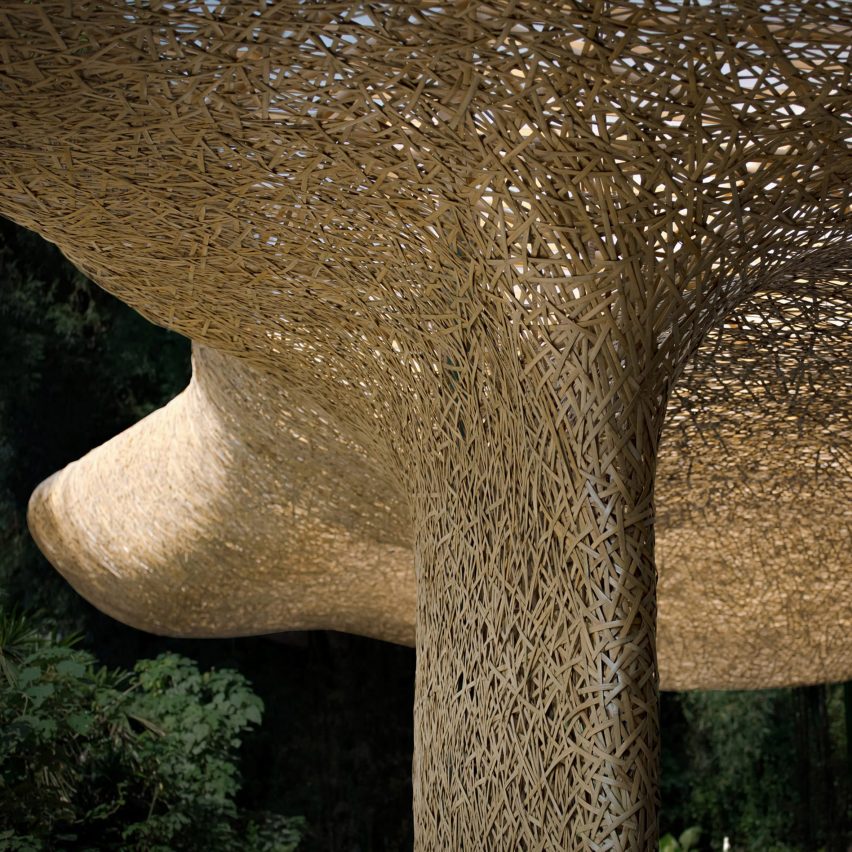
The only issue with bamboo is that it requires treatment to resist insects and rots. If it is used without treatment bamboo can attract insects and could also swell and break after absorbing water.
#8. Prefabricated Concrete Blocks & Slabs
The prefabricated concrete slabs, as the name suggests, are made in a factory. The concrete is pre-fabricated into blocks and slabs in the factories to be used later for construction. All that needs to be done at the construction site is to assemble all these slabs and blocks as per need.
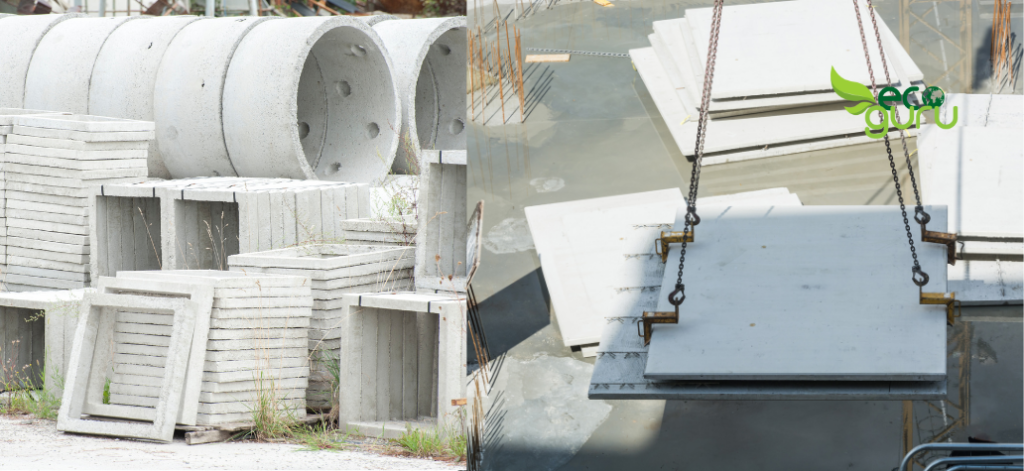
The pre-fabrication ensures that it is less polluting to construct the building as most of the preparation is done in a controlled environment. The use of prefabricated concrete slabs also helps you reduce your carbon footprint as a smaller number of things need to be transported.
Concrete is the best-known material to date to be used for construction purposes. And the use of pre-fabricated blocks & slabs ensures a reduced amount of pollution during construction. Its use also helps reduce construction costs as pre-fabricated material is often cheaper.
#9. Polyurethane Plant-Based Form
Polyurethane plant-based form is manufactured by using materials like kelp, hemp, and bamboo. This 100% organic material can provide insulation and it is highly resistant to moisture and heat. This plant-based form eco-friendly building material also provides protection against mold formation and pest infestation. Above that, this material is rigid and quite immovable.
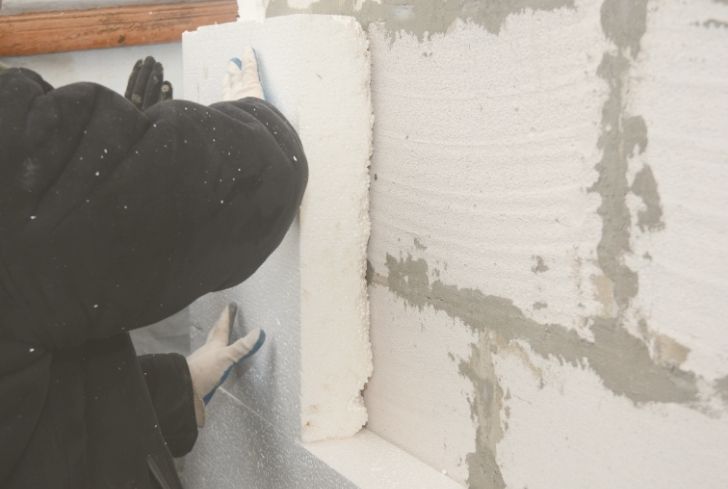
All these qualities of the material make it one of the best eco-friendly building materials. It is best for improving the thermal insulation and the sound insulation of the house. You also get protection against all the insulation-related issues that affect your house.
This form material is also used in homes for insulation but also being used to make surfboards, turbine blades, and furniture.
#10. Reclaimed Wood or Lumber
Reclaimed wood is essentially an existing wood that is being recycled and reused in some other application than originally used. Using reclaimed wood in construction help to reduce deforestation and wood ending in landfills.
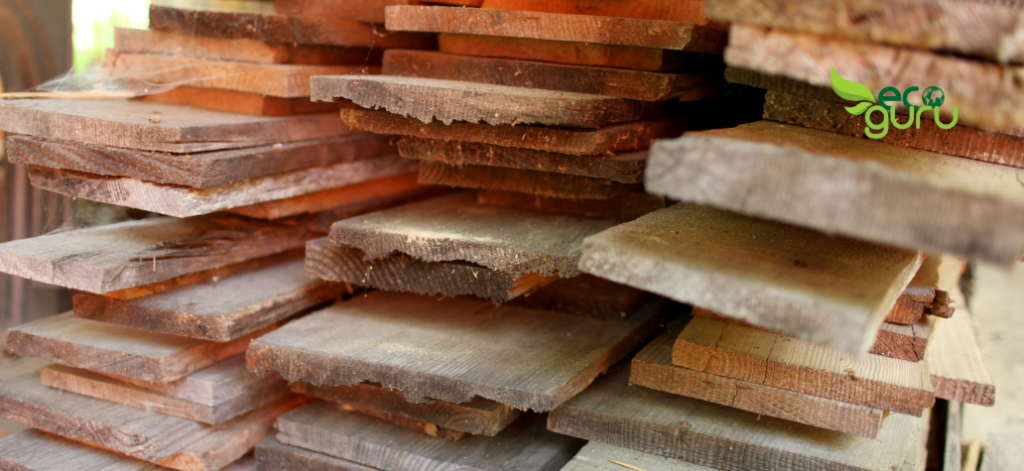
You can use reclaimed wood for making cabinets, frames, or for flooring. As the strength of reclaimed wood is reduced, it needs to be accessed individually before use. And only selected for use for projects suitable for reclaimed wood. Also, the reclaimed wood has more chances of getting attacked by insects, get degraded if not treated properly.
Reclaimed wood or lumber is not the best material, but you can use it for many applications that don’t require the use of new wood. This means it can help reduce deforestation and also reduce the waste wood ending in landfills.
#11. Recycled or Reclaimed Steel
Steel is one of the best construction materials that has helped in reducing both time and energy spent on constructing buildings. Although steel is a 100% recyclable material but recycling needs lots of energy for making it into a new shape and product. But proper and efficient recycling into new products can help in lowering the energy requirements.
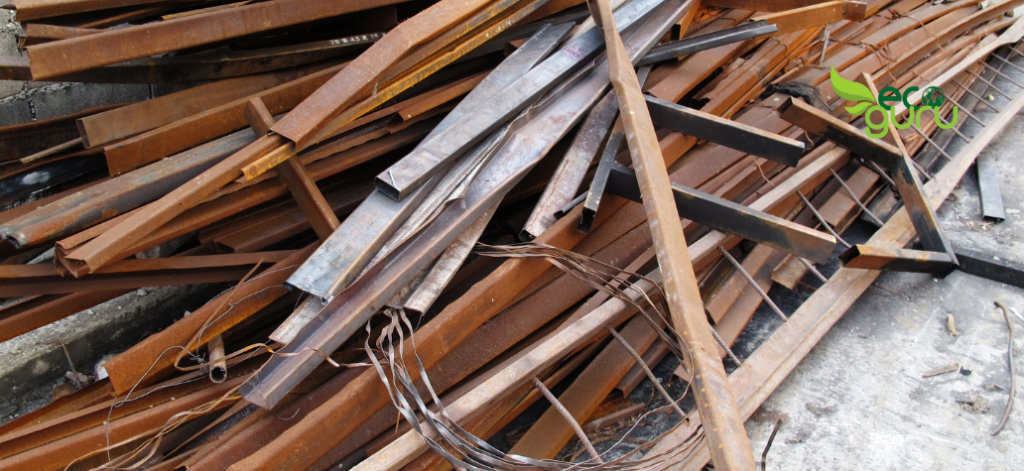
In some conditions, the steel is in perfectly re-usable condition after the end of use as the first application. This is where the steel can be reclaimed to be used again without melting it.
Steel as a material is perfect to be used for roofs and other structural support materials. It also has many other benefits that include it being water and pest resistant.

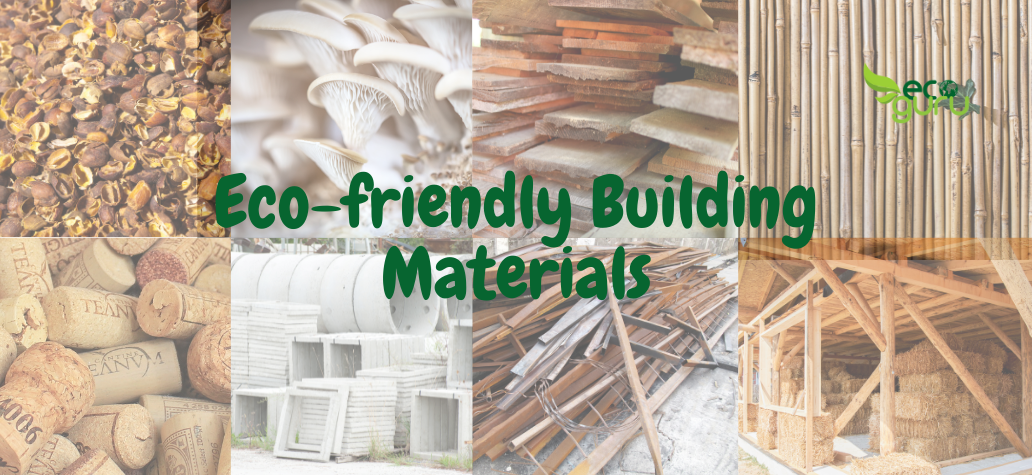
Comments
Comments are disabled for this post